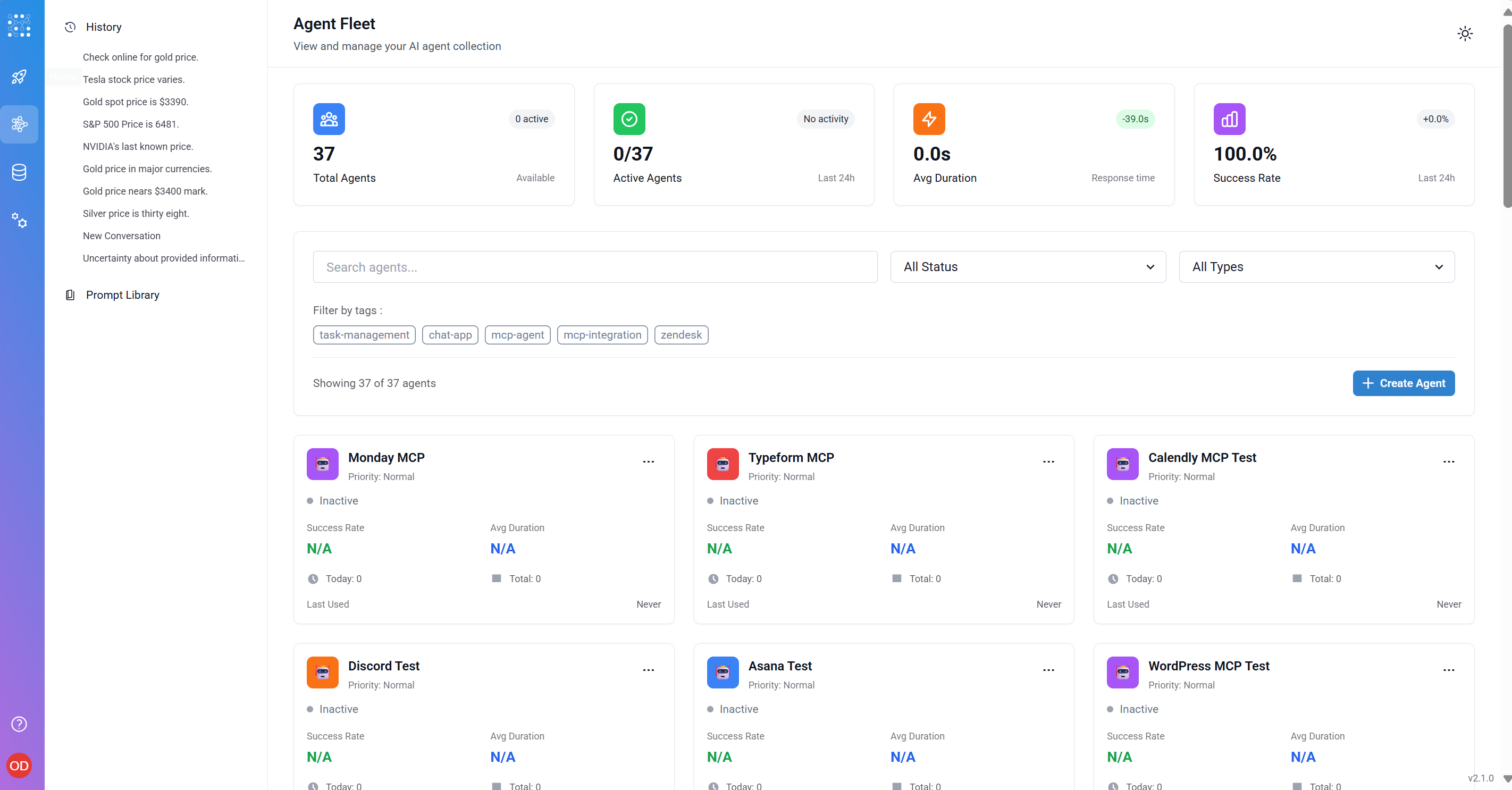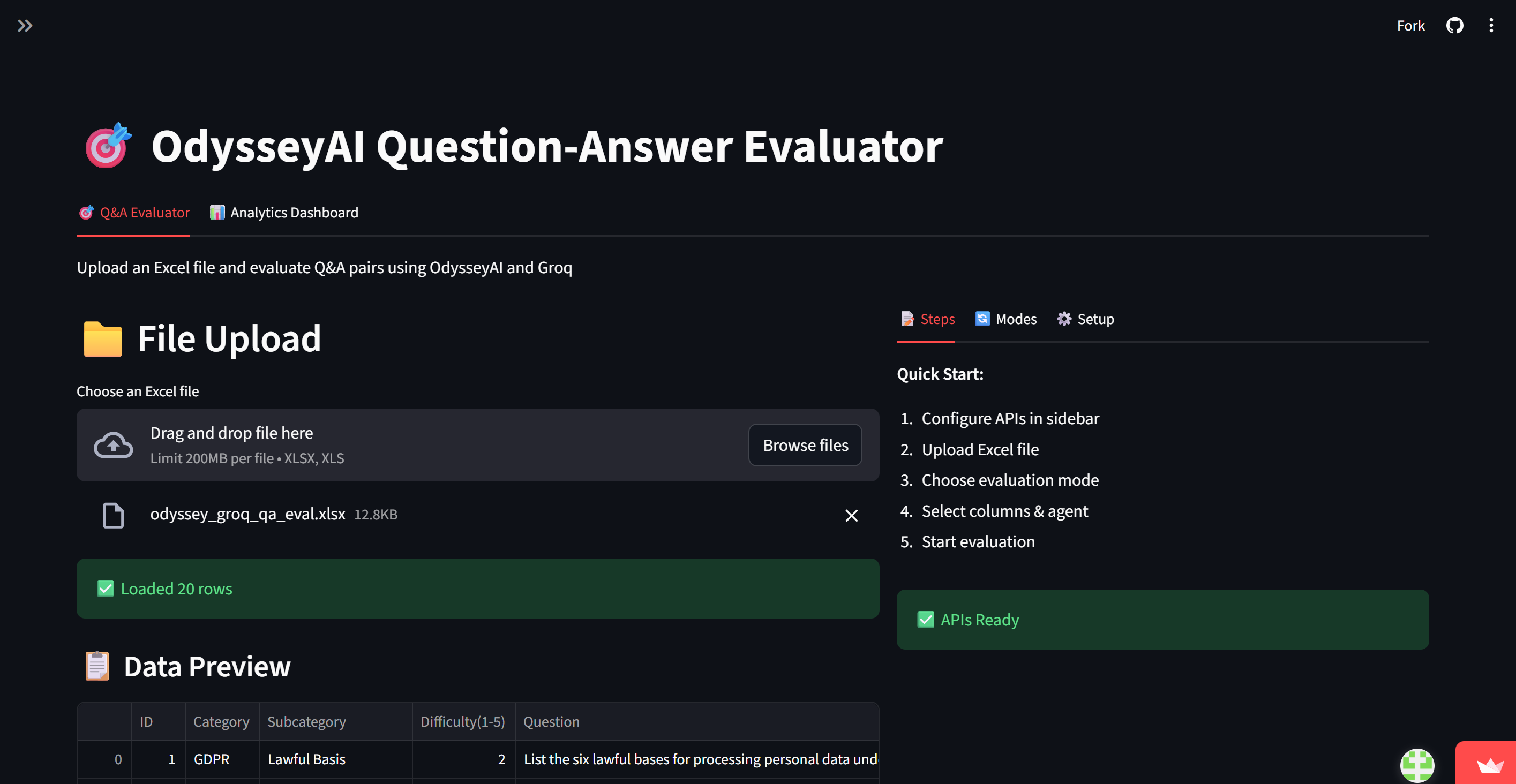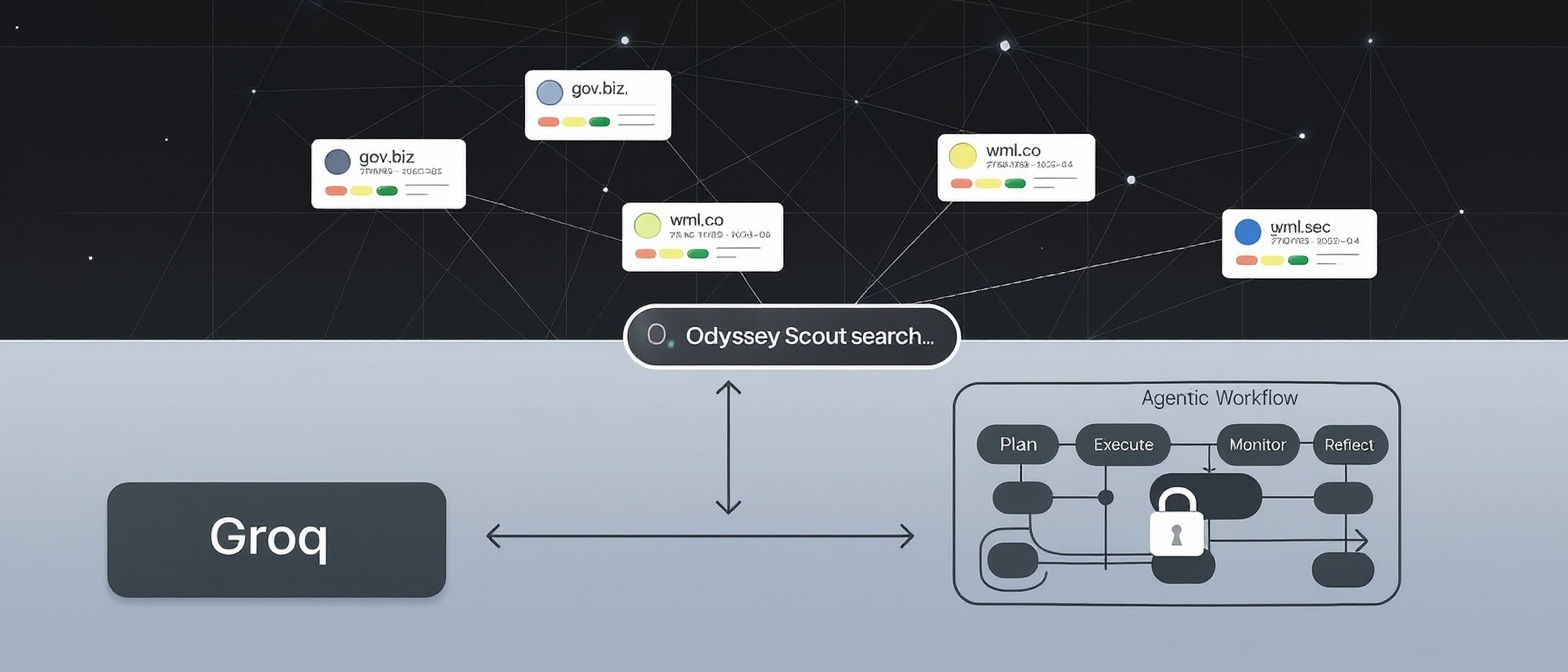Author: InteliGems Labs
Reading Time: 12 minutes
Most "agent builders" race to generate AI driven workflows. Regulated enterprises need governed agentic systems that run inside their perimeter ("in-loop"), document themselves, explain what they do, control types of AI access and respect Separation of Duties (SoD). That's exactly what Agent Fleet v2.0 (on the Odyssey 3.0 open-source core) is built to do.
If your challenge is reducing manual GRC processes and expand compliance coverage while increasing audit confidence, you do not need to choose between speed and safety. Agent Fleet v2.0 delivers governed, self-organizing multi-agents running on-prem/VPC with HITL checkpoints, evidence-by-default, and governed tool access.
Here is how Agent Fleet v2.0 moves regulated GRC workflows into production:

Agent Fleet is where you catalogue all your Multi-agents and manage your AI workforce including specialized Multi-Agents for compliance. You can update, duplicate and release popular multi-agents to your teams. These agents do much more than tasks. Think of this as the service desk for provisioning work flow tools that manage one more processes within your organization and externally.
Most "agent builders" spit out task bots. Agent Fleet is different: it’s the work hub for your enterprise AI workforce—where multi-agents are created, versioned, governed, and monitored under real controls. Built on the Odyssey 3.0 open-source core, Fleet brings governed autonomy to regulated teams that can’t compromise on data sovereignty, auditability, or Separation of Duties (SoD).
Organize Your AI Workforce
Agent Fleet is where you catalog, compose, and operate multi-agents—including specialized agents for GRC, audit, privacy, and safety. Think of it as the service desk for intelligent work:
Full Agent Lifecycle + Compute Control
Agent Fleet manages the full lifecycle and the compute stack required to run your AI workforce inside your perimeter (VPC/on-prem).
Tell the system what you want. For example, "Produce a SOX ITGC quarterly evidence package for Q2 using the finance and identity corpora." You can also use certain data sets for your specific agent (see data set targeting)
AgenFrame composes a multi-step plan across RAG → Compile → Structure → MCP steps and maps it into an executable agent team. The multi-agent team can adapt as as you change context.
The breakthrough? You describe outcomes in business language, not code. Compliance officers, auditors, and operations teams can define what they need without waiting for engineering sprints. AgenFrame translates business intent into governed technical execution.
Building on the Visual Agent Builder introduced in Odyssey 3.0, teams can fine-tune agentic workflows with drag-and-drop canvas editing, branching logic, and HITL checkpoint placement.
Accuracy and cost in regulated AI come from data discipline. Dataset Targeting binds agents to named, access-controlled corpora at design time and supports runtime selection from prompts. This reduces drift, preserves provenance, and gives reviewers a clear line of sight from output back to the sources and policies involved.
The problem this solves: Generic AI agents pull from indiscriminate data sources, leading to hallucinations, unauthorized data access, and compliance violations. Dataset Targeting creates explicit boundaries:
For regulated industries where data lineage is non-negotiable (SOX, HIPAA, GDPR), Dataset Targeting provides the evidence chain auditors require.
Control Tower enforces policies during execution, not as an afterthought. It routes work based on dataset tags and sensitivity, applies SoD rules, blocks outputs that violate policy, escalates exceptions, and records the full trail for later evidence export.
Think of it as an enterprise-grade guardrail system for multi-agents. Unlike generic agent builders that require custom-coded governance, Control Tower makes compliance enforcement a first-class capability built into the platform architecture.
Governance features:
Every run generates a tamper-evident trail citations, timestamps, file hashes, approver logs, cost summaries, and model/environment versions. Evidence packs export in JSON or PDF in seconds, so you can hand auditors a complete story without reconstructing history from logs and email inboxes.
This isn't optional logging you configure later. Evidence generation is baked into every workflow step from design through execution. When your auditor asks "show me how the AI generated this compliance report," you export a single JSON/PDF package containing:
Industry benchmark: Traditional GRC processes require 2-4 weeks to compile evidence manually before audits. Agent Fleet reduces this to seconds with automated evidence pack generation.
Starting from a blank page is slow especially when you need to convince auditors. Agent Fleet ships with pre-configured, runnable Agent Blueprints aligned to common compliance frameworks.
An Agent Blueprint is more than just code; it's a complete, production-ready package that includes the multi-agent workflow, the attached Control Tower policies (SoD/HITL), the specific dataset bindings, and the evidence schema—all ready to instantiate within your VPC
These blueprints include preset HITL checkpoints and evidence requirements, so you start with validated configurations:
Example Outcomes from Early Adopters
~85% fewer manual GRC steps (vs ~60% industry average)
~97% reporting accuracy on defined datasets (vs ~78% industry average)
~3× team productivity (vs ~1.5× typical improvement)
~40% lower operational costs in first six months
Up to ~70% TCO savings compared to cloud-only agent platforms
Methodology: Metrics measured on defined datasets with acceptance tests and baselines during controlled evaluation periods. Outcomes vary by domain, data quality, policies, and deployment choices. Case studies available upon request.
These results aren't magic. They come from replacing scattered, email-driven work with policy-gated multi-agents that document themselves and route approvals automatically.
Instead of calendar reminders and inbox archaeology, multi-agents collect artifacts continuously, attach citations and hashes, and prepare reports with the required approvals and narrative. If a policy threshold is breached (e.g., missing control evidence or low source reliability), the system halts the output and escalates before it reaches a customer or regulator.
Traditional process:
Agent Fleet v2.0 process:
When audit week arrives, you export a JSON/PDF evidence pack for each report or control test. The pack includes who approved what, when, with which model version, against which sources plus the content itself. Auditors can verify the trail without recreating it manually.
What's in an evidence pack:
Industry impact: Financial services firms report reducing pre-audit preparation time from 6-8 weeks to 2-3 days using Agent Fleet's evidence-by-default architecture.
By binding agents to named datasets, you make it explicit what each workflow is allowed to read and cite. That reduces hallucinations, narrows the search space, and limits unnecessary calls to external tools. It also means governance can review which corpus was used and why.
Cost control example: A healthcare organization reduced AI inference costs by 68% after implementing Dataset Targeting. Previously, agents searched across 50TB of unstructured data. With targeted corpora, agents query only the 2TB of clinically relevant, de-identified datasets required for each workflow dramatically reducing processing time and cost while improving accuracy.
Human Oversight Where It Matters
Not every decision should be fully autonomous. Agent Fleet makes HITL a first-class step type, and SoD rules ensure that the same person who drafts a control narrative is not the person who signs it off. The system is designed for the real world of regulated processes, not an idealized demo.
SoD enforcement example: In SOX compliance, the same individual cannot both execute a control and attest to its effectiveness. Agent Fleet enforces this by:
Why Not Just Use a Cloud Agent Builder?
Cloud agent builders are great at speed and iteration for public or low-stakes use cases. In regulated environments financial reporting, healthcare, legal privilege, safety-critical manufacturing data cannot leave your perimeter.
What distinguishes Agent Fleet is not just the on-prem deployment; it's the combination of:
✅ On-prem/VPC deployment (data sovereignty)
✅ Audit-ready evidence (tamper-evident trails)
✅ SoD/HITL enforcement (governance-by-design)
✅ Dataset discipline (provenance and access control)
✅ Governed tool access (MCP with policy enforcement)
That combination is what lets risk officers and auditors say "yes" without holding their breath.
For enterprises operating under SOX, HIPAA, attorney-client privilege, or IP protection requirements, cloud-only platforms introduce unacceptable data sovereignty and vendor lock-in risks.
InteliGems is a systems integrator. Odyssey 3.0 is open-source, and customers own the core. You pay us to integrate, configure, and deploy governed multi-agents in your environment (on-prem/VPC), with your identity, data, and controls.
There's no black box and no per-seat licensing just a stack you control, with support when you want it.
From scratch (new data sources + MCP/tooling):
~2 weeks to production-grade deployment
If data + MCP are connected:
~10 minutes to your first agent graph and a next-day prototype
Your teams keep the knowledge and the configurations. We enable; you operate.
Discovery & Scoping (Week 1):
Configuration & Integration (Week 1-2):
Training & Handoff (Week 2):
Ongoing Support (Optional):
Continuous artifact collection, narrative drafting with citations, approver trails, and JSON/PDF export HITL enforced. Perfect for quarterly reporting cycles where manual evidence compilation creates bottlenecks.
Use case: Automate the collection of IT General Controls (ITGC) evidence for change management, access controls, and system backups. Agent Fleet monitors control execution, collects evidence artifacts, and generates quarterly reports with complete audit trails.
Dataset-bound checks with exception queues, holds, and routing to control owners. Dashboards provide live evidence for continuous compliance rather than point-in-time audits.
Use case: Monitor security controls across cloud infrastructure, identity management, and data protection. Agents detect policy violations in real-time, escalate to appropriate owners, and maintain evidence logs for SOC 2 Type II attestation.
Redaction, retention, and PHI-sensitive routing inside your VPC. Evidence packs reduce audit preparation time by automatically documenting how protected health information was accessed, by whom, and under which policies.
Use case: Automate clinical documentation workflows with automatic PHI redaction for non-authorized reviewers. Agents apply retention policies, enforce access controls, and generate audit trails for HIPAA compliance officers.
Source reliability checks, model/version traceability, and AI-claims guardrails to avoid risky "AI-washing." As the EU AI Act comes into force, organizations need documented evidence of AI system governance Agent Fleet provides this by default.
Use case: Implement transparency requirements for high-risk AI systems. Agents document data sources, model decisions, and human oversight at every step. Evidence packs demonstrate compliance with Article 13 (transparency) and Article 14 (human oversight) requirements.
From there, teams expand to adjacent processes (e.g., ESG reporting, legal privilege reviews, supplier risk assessments) using the same governance backbone.
✅ A governed prototype of a priority workflow runs in your environment, with Control Tower policies applied
✅ At least one Agent Blueprint (runnable, governed) is deploying evidence packs at the click of a button
✅ Dataset Targeting is configured for core corpora, with runtime selection available in prompts and recipes
✅ MCP has connected to 2-3 high-value systems under policy
✅ Queue Manager & Monitoring show real volume, latency buckets, success/error rates, and exportable evidence
You'll have both momentum and a template for the next 2-3 governed automations.
If your challenge is to reduce manual process debt and increase audit confidence, you don't need to choose between speed and safety. With Agent Fleet v2.0 on Odyssey 3.0, you can ship self-organizing multi-agents that run inside your perimeter, with HITL/SoD, evidence-by-default, dataset discipline, and governed tool access and you can do it on timelines that match the real world.
From scratch: ~2 weeks to production-grade
With data + MCP: ~10 minutes to the first agent graph and a next-day prototype
Schedule a 30-Minute Scoping Call →
∙ Odyssey AI 3.0 Platform Overview
∙ Control Tower Governance Framework
∙ Dataset Targeting Documentation
∙ MCP Integration Catalog (150+ Connectors)
About InteliGems Labs
InteliGems is a systems integrator specializing in governed AI for regulated industries. We deploy Agent Fleet v2.0 on the Odyssey 3.0 open-source core, delivering turnkey multi-agent systems that run on-prem/VPC with full code ownership. Our clients include financial services, healthcare, legal, and manufacturing organizations that require audit-ready AI with no vendor lock-in.
Methodology note: Metrics cited above were measured on defined datasets with acceptance tests and baselines during controlled evaluation periods. Outcomes vary by domain, data quality, policies, and deployment choices. Case studies and evidence samples are available upon request.
Product Updates

November 14, 2025
Odyssey AI QA Evaluator delivers fast, reliable answer evaluation with export-ready evidence packs. Track agent quality, compare versions, and prove your AI is ready for production.

November 13, 2025
Odyssey Scout is a governed web research engine that enables AI agents to explore the live web while maintaining audit-ready compliance through policy-gated browsing, line-level SourceSnips™ citations, and exportable evidence packs all within your VPC. It transforms ungoverned web access into defensible, traceable research workflows with human-in-the-loop approvals and tamper-evident trails for regulated environments.
Get started today
We’ll map your controls, connect a dataset, and stand up a private POC in 1-4 weeks.